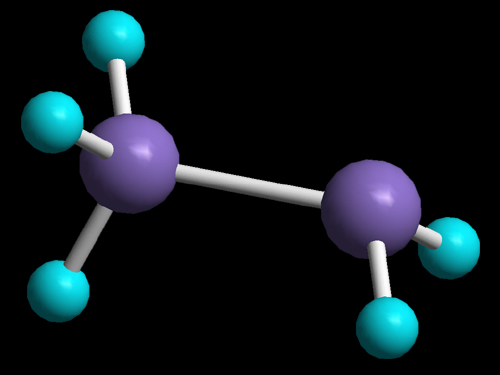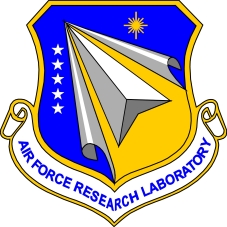Untangling the formation of organo silicon and germanium molecules at low temperature presents an important means to understand the chemical processing of circumstellar envelopes, of molecular clouds, and of planetary atmospheres of Jupiter and Saturn. These processes have also strong ties to semiconductor device manufacturing and non-traditional organic synthesis. We initiated a Si-C, Si-Si, and Ge-Ge bond coupling by interaction of the silane, methane, and germane molecules by electron irradiation to form the silyl, methyl, and germyl radicals followed by recombination of the radicals to form 1,2-disila-ethane (disilane), 1-sila-ethane, and digermane. These primary reaction products have been observed via infrared spectroscopy and are degraded sequentially to hydrogen-deficient radicals and clusters. For example, for the first time, we identified transitions of the 1,2-disila-vinyl and 1,2-disila-ethyl radicals in low temperature matrices. These assignments have been confirmed with perdeuterated reactants. Similar radicals were identified in electron irradiated methane-silane and germane ice samples at 10 K.

Recent Selected Publications
1. D. Sillars, C.J. Bennett, Y. Osamura, R.I. Kaiser, Infrared spectroscopic detection of the disilenyl (Si2H3) and d3-disilenyl (Si2D3) radicals in silane and d4-silane matrices, Chem. Phys. Lett. 392, 541-548 (2004). (PDF)
2. D. Sillars, C.J. Bennett, Y. Osamura, R.I. Kaiser, First infrared spectroscopic characterization of the disilyl (Si2H5) and d5-disilyl (Si2D5) radicals in low temperature silane matrices, Chem. Phys. 305, 141-153 (2004). (PDF)
3. C.J. Bennett, D. Sillars, Y. Osamura, R.I. Kaiser, Infrared spectroscopic identification of the methylsilylidyne (SiCH3, X2A") and the silenyl (H2CSiH, X2A') radicals in methane-silane matrices, Chem. Phys. Lett. 404, 327-335 (2005). (PDF)
4. R.I. Kaiser, Y. Osamura, Infrared Spectroscopic Studies of Hydrogenated Silicon Clusters: Guiding the Search for Si2Hx Species in the Circumstellar Envelope of IRC+10216, Astron. & Ap. 432 559-566 (2005). (PDF)
5. D.S. Sillars, C.J. Bennett, Y. Osamura, R.I. Kaiser, Infrared spectroscopic detection of the methylsilyl (CH3SiH2, X2A') and the silylmethyl (CH2SiH3, X2A') radicals and their partially deuterated counterparts in low temperature matrices, Chem. Phys. 315, 41-52 (2005). (PDF)
6. R.I. Kaiser, Y. Osamura, Laboratory Studies on the Infrared Absorptions of Hydrogenated Carbon-Silicon Clusters: Directing the Identification of Organometallic SiCHx Species toward IRC+10216, Ap. J. 630, 1217-1223 (2005). (PDF)
7. W. Carrier, W. Zheng, Y. Osamura, R.I. Kaiser, First infrared spectroscopic characterization of digermyl (Ge2H5) and d5-digermyl (Ge2D5) radicals in low temperature germane matrices, Chemical Physics 325, 499-508 (2006). (PDF)
8. W. Carrier, W. Zheng, Y. Osamura, R.I. Kaiser, Infrared spectroscopic identification of digermene, Ge2H4 (X1Ag), and of the digermenyl radical, Ge2H3(X2A"), together with their deuterated counterparts in low temperature germane matrices, Chem. Phys 330, 275-286 (2006). (PDF)
9. Y. Osamura, R.I. Kaiser, A Computational study of Si2H and Si2H2 species as candidates of interstellar molecules in: Astrochemistry - From Laboratory Studies to Observations, American Institute of Physics, 855, 289-295 (2006).
10. W. Carrier, W. Zheng, Y. Osamura, R.I. Kaiser, Laboratory Investigations on the Infrared Absorptions of Germanium-Bearing Molecules--Directing the Identification of Organo-Germanium Molecules in the Atmospheres of Jupiter and Saturn, Ap. J., 654, 687-692 (2007). (PDF)
11. R.I. Kaiser, W. Carrier, Y. Osamura, R.M. Mahfouz, Infrared Spectroscopic Detection of the Methylgermyl (H2GeCH3) Radical and its Perdeuterated Counterpart in Low Temperature Matrices, Chem. Phys. Lett. 492, 226-234 (2010). (PDF)
12. A.E. Tomosada, Y.S. Kim, A.H.H. Chang, R.I. Kaiser, First Detection of the Silylgermylene (H3SiGeH) and D4-Silylgermylene (D3SiGeD) Molecules in Low Temperature Silane-Germane Ices, Chem. Phys., 409, 49-60 (2012). (PDF)



